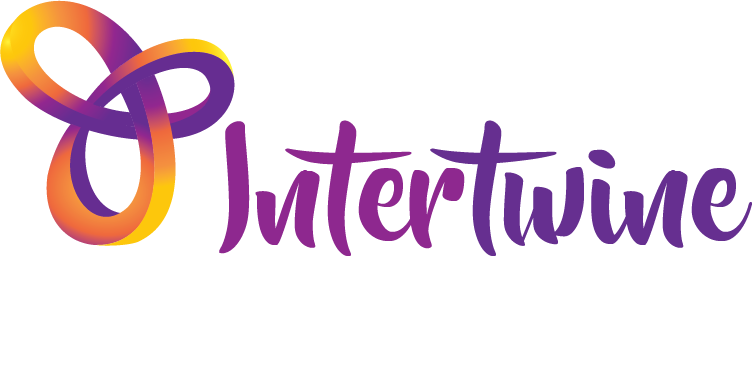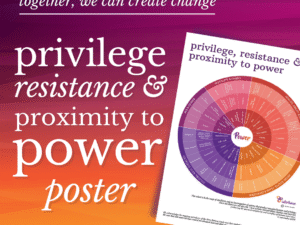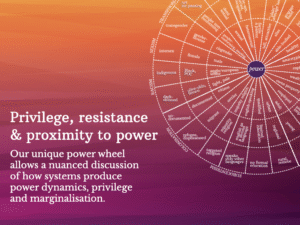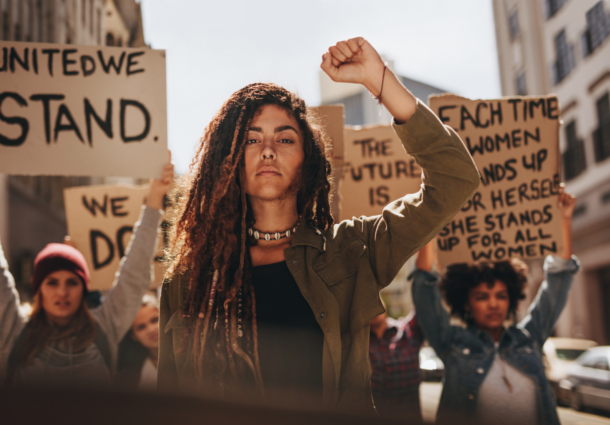If you’ve ever googled “progressive speaking list” you’ve probably discovered that there are more articles bemoaning the end of white men’s right to free speech than articles actually explaining how to create a progressive speaking list.
Before we get to the how, though, let’s talk about the ‘why’. Research shows that even in progressive organisations, men talk at a rate of about double that of women and there’s anecdotal indications that white men talk even more. What’s more, if you count the amount of time that men are speaking, rather than just how often they speak, the numbers are even worse. (Here’s a great tool to measure your next meeting for yourself: Are men talking too much?)
There’re also anecdotal stories of people of colour being spoken over, trans people being spoken over (but usually when they present as female) and how often women and other minorities are interrupted. There’s no explicit tool we’ve found to measure how often people of colour or queer people or disabled people speak in meetings, but you could easily use the tool above and just change the categories.
Most progressive orgs already use speaking lists to ensure that a wider variety of people get to speak rather than having the conversation dominated by a few loud voices but even that doesn’t solve the problem.
(For information about how a standard speaking list system works, see Cultivate Coop.)
Before you start
It’s important to identify the facilitator of the meeting at the beginning, have everyone agree that they’re okay with that facilitator and establish whether the person facilitating is also taking the speaking list or “stack” to use the modern Occupy movement language. If it will be someone other than the facilitator, make sure everyone knows who to indicate to when they want to speak. Next, make it very clear what the method of indicating you want to be added to the list is (a good indicator is a hand held out forward towards the “stack taker” — it’s better than a hand up because it’s less distracting to the current speaker and less likely to be waved around by impatient people.)
Agree on a way the stack taker will indicate the person has been added to the list. Some people just use eye contact but this doesn’t work well for some people, such as autistic people. Instead, use an explicit nod or a thumbs up. When each person has been acknowledged, they should put their hand down.
Tell the room that you’re using a progressive speaking list. This is important — if you don’t say it, but implement it, some people will slowly get resentful that they seem to be being ignored and may take it personally rather than understand it as a structural response to counter implicit bias. If you explain it, everyone is clear and given the opportunity to step up and step back.
You might try saying something like:
Just to be clear, today we’ll be using a progressive speaking list, which means we’re aiming to prioritise the voices of people who are marginalised in society. If you are a woman, trans, a person of colour, disabled, or queer, there’s a good chance you’ve previously experienced your voice being marginalised in meetings or you’ve been talked over, so we’re aiming to call on those people first. If you’re more privileged, you’re asked to check that privilege and step back. We’ll also do our best to move people who haven’t participated much further up the speaking list to ensure we hear from as many people as possible. So if you want to be added to the list, indicate to {Name} by holding your hand out to the centre of the room and they will nod to acknowledge you.
Stepping back is a powerful move that more privileged people can use to give their spot up when two people are keen to speak at once. Since not everybody will be wearing their disadvantage on their bodies, those who know that they are more able or more privileged can choose to step back when called upon if they’ve seen others indicate who have not yet been called.
Stepping up is more awkward — most people won’t want to indicate publicly invisible disabilities or sexual orientation and requiring someone to out themselves is clearly counterproductive. If the majority of people in the room don’t know each other, you could choose to do an introduction round immediately after explaining the progressive speaking list, encouraging people to share pronouns and other information which may assist the stack taker, or you can encourage participants to email the stack taker privately if there are any factors someone believes should influence their place in the stack.
But how?
A regular stack requires one list and you cross of each name as the person speaks, announcing the next two speakers.
A progressive stack requires columns. There are a couple of ways to enact a progressive stack and it depends on the size of the group and the intensity of the conversation.
In both cases, the stack in initially created the same way. Create three columns on your list: intersections; marginalised; other.
As people indicate, add them to one of the columns. Add someone who has multiple marginalities to the intersectional column, for example someone who is a black woman,or gay and indigenous, or lesbian and disabled. Add someone who has one level of marginality to the middle column: white women, straight black men, gay white men. Everyone else goes into the final column.
If you have a particularly large group, you may wish to create four columns and further separate the layers affecting black straight women from black lesbians, for example — your columns could be ‘triple marginality’, ‘double marginality’, ‘single marginality’, other.
Small group, slow conversation
In a small group or a fairly slow conversation, you can ask each person on the column furthest to the left to speak, then when that list is exhausted, move to the middle column and then to the ‘other’ column. In a small group, the people in the ‘other’ column will still get to speak in a reasonable time frame and won’t feel like others are constantly ‘jumping the queue’ while the voices of people who are usually marginalised will still be heard first.
Large group or rapid conversation
If the group is large or the conversation is heated or moving quickly, then the columns keep filling up rapidly and people in the ‘other’ column would never get to speak if the ‘intersectional’ column had to be fully emptied before you could move on.
Instead, draw a line across all three columns every five to ten minutes and exhaust the speakers up to that line in each column before moving on again.
Stack taker’s discretion
It’s a bit dangerous to allow the stack taker to move people down the list according to their own feeling — it’s too easy for personal or implicit bias to sneak in — but every facilitator has at some point wanted to say, “sorry, John, I’m calling on Jane first because you’ve spoken a lot already…” If you do feel you need to move someone down, do make it clear why, again so that no one can take it personally.
If the person does this a lot, have a private conversation with them. (As an autistic person, it took me quite a long time, up until my 20s, to understand that the purpose of the teacher calling on contributions was to facilitate a discussion, not get someone to tell the class the right answer. I didn’t stop waving my arm around until I understood that. Even when I was told, “we can’t always call on you first, sometimes you have to bite your tongue” I would just literally bite my tongue until someone else had contributed and then I would be second.)
In combination
A progressive speakers’ list isn’t the only way to ensure minority voices are heard. Another method, for example, is going around the room in order to hear from anyone who wishes to speak at least once. If you have a longer meeting, or a fairly small group, you can easily do this more than once, but if it is done too often, it slows the pace of discussion down too much and can feel stilted. It also puts introverts on the spot and can feel uncomfortable.
You can also break workshops up into smaller groups, although sometimes, men or white people will dominate these smaller groups as well.
If the meeting is a full-day session, take some time to talk about group expectations — hopefully someone will suggest that everyone should be heard, or that listening without interrupting is important. As a facilitator, you can suggest these if no one else does. Some groups I’ve been in have an established set of ‘safe meeting guidelines’ that can be handed to participants (see this example from Atlassian on how to have the discussion).
There are other things to watch out for as well: are women and people of colour asked more often than others to take the minutes, take the coffee orders or clean up the space? Without realising it, these subtle messages that devalue a person’s role can actively discourage them from making contributions. You might be surprised to realise that you’ve literally never seen the white men doing the washing up after the meeting — and they might be surprised when you ask them to. It’s not a conscious thing for anyone, it’s all just part of our ingrained unconscious biases.
We’d welcome any feedback about your experiences running a progressive meeting including any new techniques we haven’t listed.
Further reading: The progressive stack and standing for inclusive teaching
Rosanne Bersten has been involved with activist organising spaces and navigating collective meetings from various positions of privilege and marginality since 1988. Image: Jared Rodriguez/TruthOut.org



